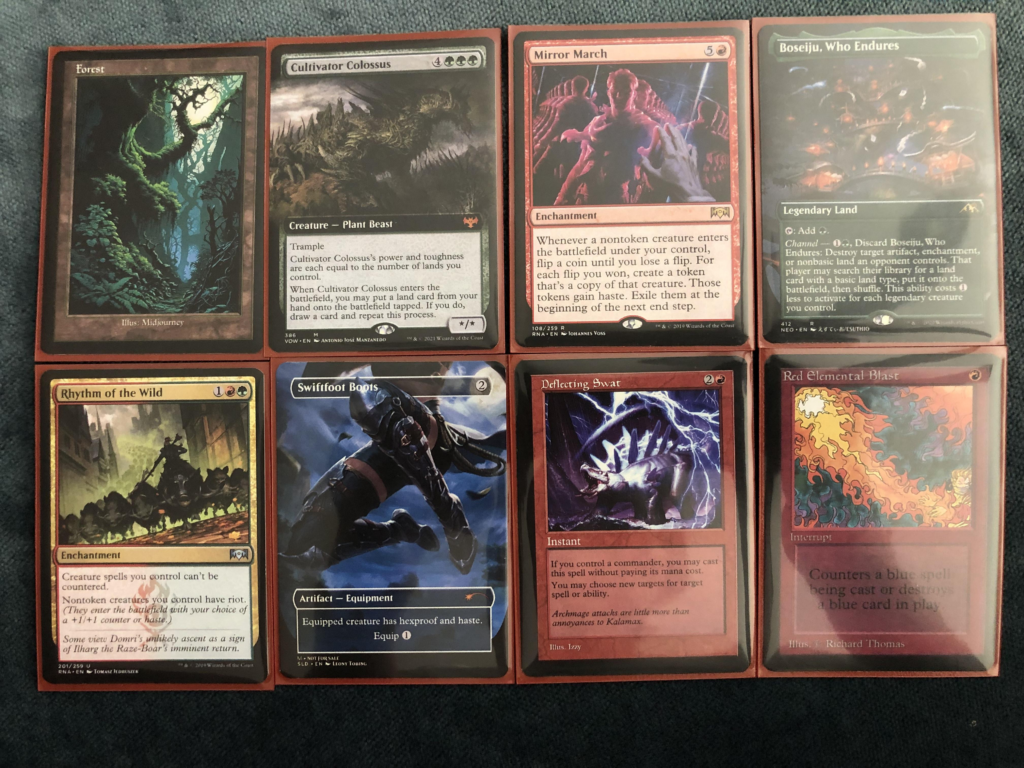Mana rocks are an essential component of Magic: The Gathering (MTG) gameplay. They are artifacts that provide additional mana to players, allowing them to play spells and creatures faster and more efficiently. In this article, we will explore the most popular mana rocks in MTG, including Mana Crypt, Mana Vault, all worthy of being MTG proxy cards, as well as other notable mana rocks. We will also delve into the cost, philosophy, maintenance, and future of MTG mana rocks.

Mana Rocks in MTG:
Mana rocks come in various shapes and sizes, from small and budget-friendly to large and expensive. The most common mana rocks are:
- Sol Ring – A two-mana artifact that provides two colorless mana.
- Arcane Signet – A two-mana artifact that provides one mana of any color.
- Thought Vessel – A two-mana artifact that provides unlimited hand size.
- Chromatic Lantern – A three-mana artifact that provides one mana of any color and allows players to play spells of any color.
- Gilded Lotus – A five-mana artifact that provides three mana of any color.
Among these, the most notable mana rocks are Mana Crypt, Mana Vault, and Mana Drain.
Mana Crypt:
Mana Crypt is a zero-mana artifact that provides two colorless mana. However, it comes with a significant drawback – at the beginning of each upkeep, players must flip a coin. If they lose the flip, they take damage equal to their current life total.
Mana Crypt is one of the most powerful mana rocks in MTG, as it can provide a significant amount of mana for free. However, its drawback can be a significant risk, as players can lose the game if they take too much damage from it. Despite this, Mana Crypt is a highly sought-after card, with a current market price of over $200.
Mana Vault:
Mana Vault is a two-mana artifact that provides three colorless mana. However, it comes with a drawback – at the beginning of each upkeep, players must pay four life or tap Mana Vault. If they can’t or choose not to, Mana Vault deals one damage to them for each untapped mana it produces.
Mana Vault MTG is a powerful mana rock that can provide a significant amount of mana quickly. However, its drawback can be a significant risk, as players can lose a significant amount of life from it. Despite this, Mana Vault is a highly sought-after card, with a current market price of over $50.
Mana Drain:
Mana Drain is a two-mana instant that counters a spell and provides colorless mana equal to its converted mana cost. If Mana Drain MTG counters a spell, its controller can use the mana produced to cast spells on their next turn.
Mana Drain is a powerful counterspell that can provide a significant amount of mana. It is highly sought-after in competitive gameplay, with a current market price of over $500.
Breaking Down the Cost of Mana Rocks:
The cost of mana rocks in MTG can vary greatly, depending on several factors. The rarity of the card, its power level, and its demand among players can all impact its price.
Mana Crypt, Mana Vault, and Mana Drain MTG are all high-value cards that command a premium price. However, there are several budget-friendly options available for players who are looking to add mana rocks to their decks without breaking the bank.
Sol Ring, Arcane Signet, and Thought Vessel are all budget-friendly options that can provide players with additional mana without costing too much. They are commonly used in casual and competitive gameplay alike, and their prices are typically under $5.
Mana Rocks and Deckbuilding Philosophy:
Mana rocks can be used in various ways, depending on the deckbuilding philosophy of the player. Some players prefer to use mana rocks as a way to ramp up their mana quickly, allowing them to play more powerful spells and creatures faster. Others prefer to use mana rocks as a way to fix their mana base, ensuring that they have access to the colors of mana they need to cast their spells.
The choice of which mana rocks to include in a deck can depend on the strategy of the deck as well. Aggro decks may prefer to use cheaper mana rocks that provide a small amount of mana quickly, allowing them to play creatures early in the game. Control decks may prefer to use more expensive mana rocks that provide a larger amount of mana, allowing them to cast more powerful spells later in the game.
Maintaining Your Mana Rocks:
Like all cards in MTG, mana rocks require proper maintenance to keep them in good condition. Here are some tips for maintaining your mana rocks:
- Sleeve your cards – Using card sleeves can help protect your cards from wear and tear, as well as accidental spills or damage.
- Store your cards properly – Keeping your cards in a cool, dry place can help prevent warping or damage from moisture.
- Clean your cards regularly – Using a soft cloth or brush, gently clean your cards to remove dirt and debris. Avoid using harsh chemicals or abrasive materials, as they can damage the cards.
The Future of Mana Rocks in MTG:
As MTG continues to evolve and grow, the role of mana rocks in gameplay may change as well. New sets may introduce new and more powerful mana rocks, or they may shift the focus away from mana rocks altogether.
Additionally, the growing popularity of digital MTG gameplay may impact the use of mana rocks, as digital platforms can automate the process of generating mana, potentially making mana rocks less necessary.
Conclusion:
Mana rocks are an essential component of MTG gameplay, providing players with additional mana to play spells and creatures. Mana Crypt, MTG Mana Vault, and Mana Drain are among the most powerful and sought-after mana rocks in MTG, but there are also several budget-friendly options available for players. The choice of which mana rocks to include in a deck can depend on the strategy and philosophy of the deck, and proper maintenance is necessary to keep them in good condition. As MTG continues to evolve, the role of mana rocks in gameplay may shift, but they will always be an important aspect of the game.
FAQS;
Can mana rocks produce colored mana?
Some mana rocks can produce any color of mana, such as Chromatic Lantern, while others produce only colorless mana, such as Sol Ring.
How many mana rocks should I include in my deck?
The number of mana rocks to include in a deck can depend on the strategy and philosophy of the deck. Aggro decks may prefer to use fewer mana rocks, while control decks may prefer to use more.
Are mana rocks necessary for competitive gameplay?
While mana rocks are not necessary for competitive gameplay, they can provide a significant advantage by ramping up a player’s mana quickly.
